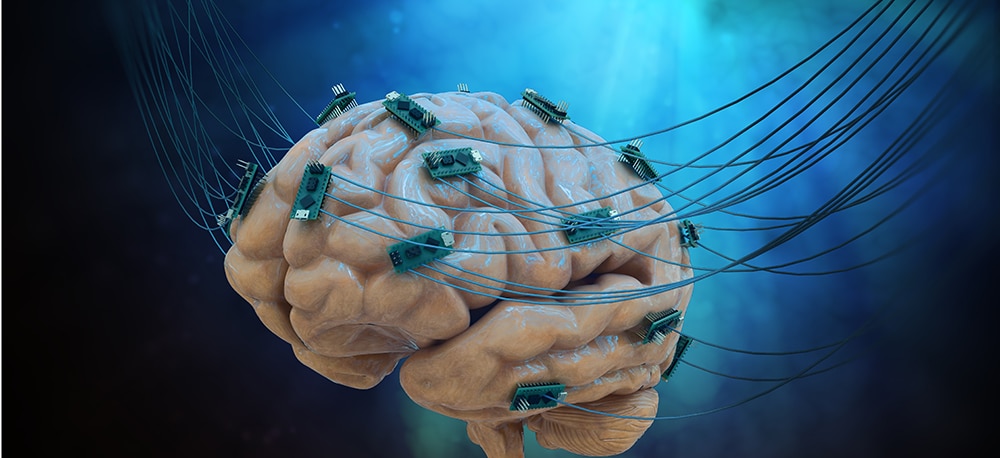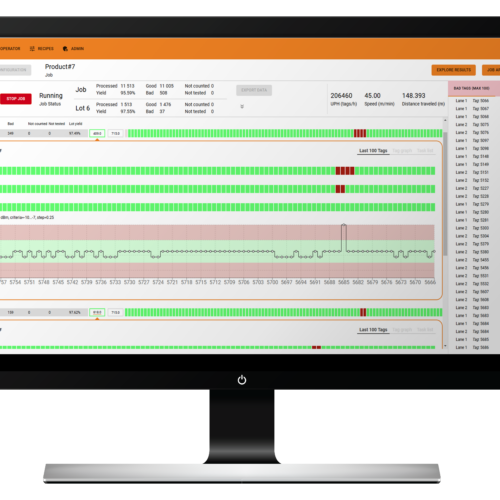Three years ago I wrote a blog article about RFID research published in 2017.
Now it feels like a good time to take a look at the research front again.
- Have the research themes changed?
- What are the new hot topics?
- What should be expected for commercial use in the upcoming years?
First, a disclaimer: The selection of the introduced research papers and overview is my own. Summaries of the articles are short and written from my personal perspective. The points I raise are not necessarily the same as the authors’ intentions. When you find the topic interesting, I recommend clicking the link and reading the whole article.
I started the analysis by looking at the headlines of RFID research articles found in Google scholar, published in 2018 – 2020. I did a word count analysis of the headlines. The word count analysis gave me an idea of the research themes. Here is my take on the RFID research.
Wearable tags
A lot is going on around Wearable tags. This seems to indicate that RAIN RFID tags will be embedded in clothing and apparel in increasing numbers. The RFID applications should be designed to take these “out of system” tags to account.

- One research line is to study integrating RFID antennas into clothes. An article titled “Textile-Integrated Stretchable Structures for Wearable Wireless Platforms” describes a brush-painted conductive, stretchable antenna that can be painted on fabric.
- Another approach is based on conductive yarns that can include not only identification technology but also sensing technology. Here is one example: “New Approaches For Augmented UHF RFID Textile Yarn”
- Yet another approach is to integrate tags to various clothing and equipment: “A Dual-ID RFID Tag for Headgear Based on Quasi-Yagi and Dipole Antennas” and “Glove-Integrated Passive UHF RFID Tags—Fabrication, Testing and Applications“
- And naturally, some tags are wearable on their own, such as wristbands: “Design of a Compact PIFA Tag Antenna for Wearable Electronics”
Sensor tags
An ongoing research topic is Sensor Tags. Using RAIN RFID as a means for transmitting information, almost anything can be sensed with RAIN RFID sensors. The trick is to find applications where RAIN RFID brings some unique benefit or a better fit to the application than other data transmission methods.
- Using a RAIN RFID tag’s antenna as a sensing element is a good example. The tag’s antenna reacts to the environment and sensor information is transmitted as a changing backscatter signal strength. This can be used to detect chemicals (“Inkjet‐printed UHF RFID tag based system for salinity and sugar detection” ) and structural/position changes (“A Novel Displacement and Tilt Detection Method Using Passive UHF RFID Technology”).
- Passive RAIN RFID tags harvest the energy needed for sensing and data transmitting from the reader. Passive tags do not need batteries and can be designed to be very small, which is a huge benefit in some applications. “Design of passive UHF RFID sensor on flexible foil for sports balls pressure monitoring”
- The effects of RF-radiation from mobile phones and other devices on humans is a discussion topic on its own. RAIN RFID tags do not transmit actively, but by backscattering the data. The energy levels are in microwatts instead of watts from devices such as mobile phones. This is a benefit when sensor tags are directly on humans: “Adjustable Passive RFID Skin Mounted Sticker”

RFID in health and wellness
Health and wellness is an interesting and growingly versatile research area.
- RAIN RFID can be used in specialized sensing applications used in healthcare. An article titled “Voice Prosthesis Implantable UHF RFID Self-Sensing Tag for Microbial Growth Detection” describes how RFID can be used to detect microbial growth for avoiding more serious consequences.
- RAIN RFID is not limited to sensing and identifying. It can be also used as a means of challenging medical treatment. This article describes the use of RFID in stimulating neural tissue in the brain to help in the recovery of traumatic head injuries: “Split-Ring Resonator Antenna System With Cortical Implant and Head-Worn Parts for Effective Far-Field Implant Communications
- Sometimes RAIN RFID could be a part of a more permanent solution. For example, it can be utilized as a communication method with advanced prostheses: “Constrained Safety-Integrity Performance of Through-the-Arms UHF-RFID Transcutaneous Wireless Communication for the Control of Prostheses”

Printed Antennas, miniaturization, graphene, and specialty tags
Other hot research topics include printed antennas, tag miniaturization and graphene, and specialty tags
- Printed antenna and tag research is another ongoing topic. Research is looking into benefits of various materials such as silver: “Printable Stretchable Silver Ink and Application to Printed RFID Tags for Wearable Electronics”, and graphene: “Screen-Printed Graphite Nanoplate Conductive Ink for Machine Learning Enabled Wireless Radiofrequency-Identification Sensors”
- Tags are getting smaller in general, and this is also seen in research topics: “Miniature Coplanar-Fed Folded Patch for Metal Mountable UHF RFID Tag” and “Passive Enhancement of Read Range of Miniaturized UHF RFID Tags”
- Graphene has been proven to be a suitable material for RAIN RFID tag antennas. Current research seems to be focusing more on applications such as sensing: “Graphene Oxide Dielectric Permittivity at GHz and Its Applications for Wireless Humidity Sensing” and “Sustainable production of highly conductive multilayer graphene ink for wireless connectivity and IoT applications
- An interesting specialty tag goal is to develop “invisible” tags to be integrated into windows: “Exploitation of Transparent Conductive Oxides in the Implementation of a Window-Integrated Wireless Sensor Node”(I admit that invisibility is just how I imagined the transparency)

RFID has a bright future ahead
Overall the research topics indicate increasing maturity in the RAIN RFID and NFC technologies. There is no need to study the basic viability of the technology, profitability, or efficiency of the basic use cases, or common manufacturing methods. Research works at the edges of the technology – and those edges are a good distance away from the everyday RFID and NFC use cases. New research is not needed to prove the RAIN RFID usability in supply chain or asset management in retail, manufacturing, or healthcare. Research is not needed for proving NFC’s suitability to travel tickets, access cards, or as a marketing tool.
Research can focus on “wilder and wilder” sensor integrations, the use of RFID in patient treatments, and other innovative and wonderful ideas out there. Strong research on RFID indicates a strong and healthy long-term future for the technology.

The Future of RAIN RFID Tag Design
Watch this webinar to hear our panel of three industry experts identify and discuss trends and disruptions that will affect the RAIN RFID tag industry, and how tagging implementations will change in the coming five years.



